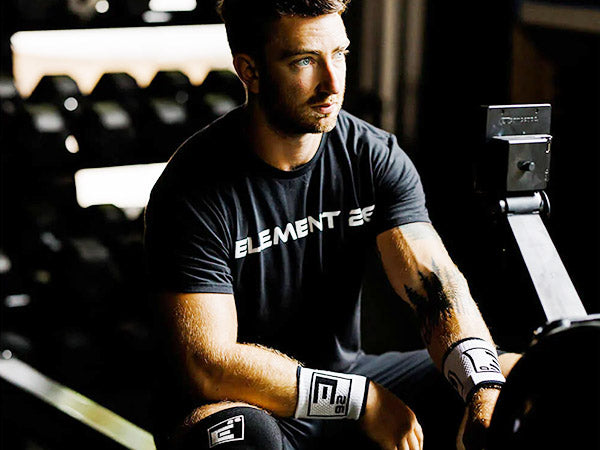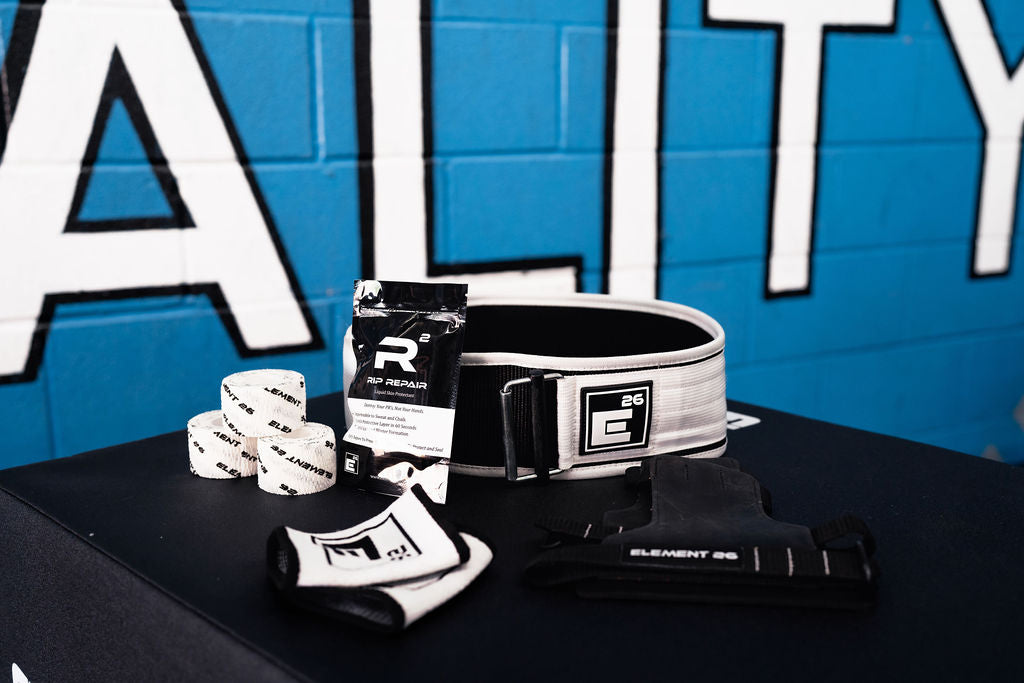Working out with muscle soreness...

Whether you’re an experienced athlete or new to training, muscle soreness will always come and go. It’s functionally limiting and at times can be quite painful.
Remember the last time you did too many squats after not squatting for several weeks? The weight wasn’t necessarily heavy, but the volume was just enough that two days later you could barely walk up stairs.
The intensity and duration of the soreness you experience will differ depending on the task you performed or in this case the stimulus applied. Adding a new stimulus for a trained athlete can absolutely affect their level of soreness, whereas most any stimulus placed upon an untrained individual will create a good deal of soreness following the task.
In this blog, I’m going to briefly cover the topic of muscle soreness following mechanical musculoskeletal work and what to do about it.
Let’s get into it!
What are the mechanisms of soreness?
Everytime you work out you create microtears in the muscle tissue. That’s right, you’re literally ripping apart tissue. That’s also why you get sore after a tough workout (typically noticed 36-48 hours later).
These microtears occur more greatly following resistance training activity and high intensity tasks. Aerobic tasks won’t have the same degree of trauma to the muscles unless you’re relatively untrained to that aerobic task.
The microtears create a cascade of inflammatory responses which start the process to repair the tissue. Keeping it simple, that’s how you get stronger.
If you’re new to training, almost everything you do in the gym is a stimulus for creating muscle tissue microtrauma. Just remember this is not necessarily a ‘good’ or ‘bad’ thing. It just is what it is.
Whereas if you’re a trained athlete and have years of experience under the bar, then the level and degree of soreness will depend on whether or not you added a greater stimulus above that to which you are adapted. This can include performing a new exercise, increasing the volume too quickly, or adding more weight.

Training level matters.
If you’re new to training and working out, it’s best to be more conservative at first to understand how your body responds to a given stimulus. Otherwise you’ll learn the hard way!
For example, if you want to start doubling your squat volume (sets x reps x load) but just learned how to squat last week, then this is probably not a great idea.
The amount of soreness you’ll have after a big session is going to require a greater amount of recovery time. That time lost due to soreness and pain could be spent training more. So instead of doing those 5 sets of squats in one session, maybe it’s better to perform 3 on Monday and then 2 on Thursday/Friday.
There’s no perfect formula for figuring out how much volume is right for you at first, instead experimenting by starting on the lower end and progressively increasing the volume over time is best.
On the other hand we have more trained individuals who have learned the foundations of movement and have a sufficient level of strength. They’ll be less susceptible to crippling day-to-day soreness.
Of course these individuals can get sore, but it’s not as limiting and the recovery time is much less than a newbie who slaps on too many plates in the beginning stages.
The trained individual’s body can handle the stress of training more and has the adaptations in place for better recovery. Not to mention, these trained individuals are usually more aware about how to enhance recovery via outside protocols (ie. nutrition, sleep, hydration, stretching, etc.)
Can you train through soreness?
If you’re training or working out consistently, soreness is part of the game. Sometimes you get it and sometimes you don’t. There’s not always this ‘perfect soreness’ predictor.
Although as I alluded to before though, a new stimulus for an athlete of any training level can cause some degree of soreness and/or fatigue. To limit that it comes down to proper programming strategies of those new exercises/workouts in order to control the soreness along with appropriate rest and recovery.
So if soreness is inevitable along the way, can you still train through it? For example if you squat on Monday, but then start feeling sore Tuesday night, can you still train your deadlifts that you have planned for Wednesday?
Short answer, yes.
However, the degree of soreness matters. If this is some debilitating soreness (usually seen in newer athletes that did way too much), then it may be best to push off that training session another day or so. Maybe you workout the upper body instead.
If you’re experiencing lighter soreness and some general stiffness, spend a few extra minutes warming up in the beginning and get to work. That’s normal.
You have to pay attention to your body. If you’re experiencing ‘pain’ then it’s going to be smarter to change up the routine or push back the workout all together. However, the more advanced you become in your training the better able you are to differentiate ‘pain’ from soreness along with having a better idea of how to manage those soreness symptoms.

What can you do if you’re sore?
If you’re experiencing more mild-moderate soreness and still plan to workout through it, there are a few things you can do that are quick and easy to implement.
The first of which is light activity. Getting the blood flowing and increasing your core temperature is a great way to reduce some “tightness” in preparation for the task at hand. Starting with general movement such as biking or rowing is great, however as you get more warm, progressing to more movement specific drills will get you prepared for the upcoming session. So if you have squats on the menu, taking some time to perform goblet squats under a light load can help you get into a good position pre-squats.
Another tip for when you are sore is gentle stretching through a range of motion. Remember though, when you’re sore, you’re not going to have as much available range of motion as you normally do since you’re more inflamed and neurologically stiff. Fancy words for you being “tight.” Just don’t fight the tightness. Instead, meet it where it resists your motion and breathe through it. Breathing under control (via the nose) induces a state of relaxation and can lengthen the tissue more.
Hydration is key. The more water you have in the muscle and surrounding tissue, the more smoothly they can glide and contract. The more hydrated you are, the better the nervous system is going to fire. So that means a better ability to relax and contract muscle. Keep in mind, electrolytes such as sodium should be replenished if the prior session was a sweaty one. That will also help nerve and muscle tissue function.
*There is also some data demonstrating the effectiveness of hot/cold therapy 24 hours following a training session for reducing muscle soreness. So taking a cold shower or hitting the sauna could potentially benefit you prior to the following training session but according to the research, it’s most effective within those 24 hours following a given session (1).
Reference:
1) Wang Y, Li S, Zhang Y, Chen Y, Yan F, Han L, Ma Y. Heat and cold therapy reduce pain in patients with delayed onset muscle soreness: A systematic review and meta-analysis of 32 randomized controlled trials. Phys Ther Sport. 2021 Mar;48:177-187. doi: 10.1016/j.ptsp.2021.01.004. Epub 2021 Jan 14. PMID: 33493991.

Written by: Phil Gauthier
Phil is a Doctor of Physical Therapy and Certified Strength and Conditioning Specialist.
He is also an Owner and Co-Founder of the performance gear company, Element 26 (E26).
E26 prides itself on developing functional gear for the functional athlete to help you "Destroy Your PR's, Not Your Body."
To reach Phil or any member of the Element 26 Staff, please email us at: support@element26.co and we will respond to you ASAP!





Leave a comment